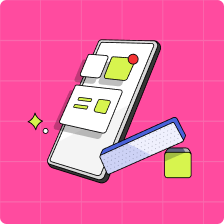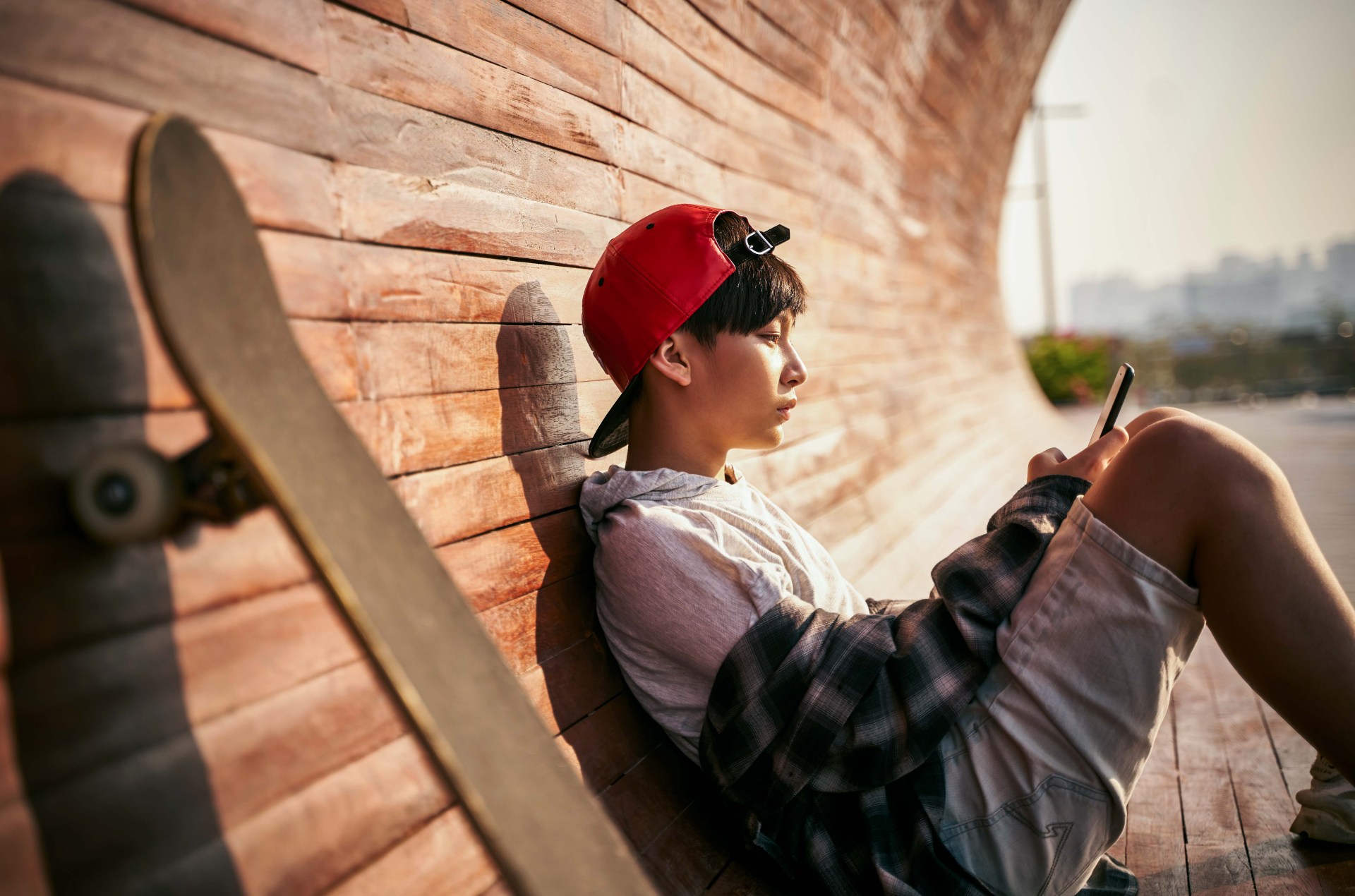Do you have kids and teens whose mantra seems to be, “If it isn’t on Instagram, did it really happen?” Instagram is a photo-sharing app that also allows users to chat, share videos, and follow other users. The app’s features promote creativity and can be a venue for self-expression. With over one billion users, it continues to grow in popularity. While it started as purely a photo-sharing app, it’s shifted to become an “entertainment” app. This change came about with the growing popularity of TikTok.
Technically users of Instagram need to be a minimum of 13-years-old. However, your tween may already use the app. Here’s what parents need to know about how Instagram works, safety concerns, and how you can monitor their activity on Instagram.
What is Instagram?
Instagram is a social media platform that allows users to share photos, videos, and snippets of their lives. Its popularity grew over the years because of the ability to “instantly” share a photograph after capturing it. Instagram is owned by Meta (formerly known as Facebook) and is a visual-based platform. The app is popular among Millennials and Gen Z, as there are many popular brands, celebrities, and influencers on the app. Teens and tweens are also using the tool to keep in touch with friends by chatting through messenger and sharing snippets of their life.
Read more about popular social media platforms teens are using.
How does Instagram work?
Instagram works on a follower-based concept. To get started, your child would need to download the app and sign up for an account—which is free. Once signed up, they can create an Instagram profile, then they can follow other Instagram users based on their likes or interests, or if you know them. To make an Instagram post, your child can select a photo or video on their smartphone’s camera. Photos can be manipulated before posting by cropping the image, changing the brightness and selecting a filter to apply to the photo. Like Twitter, Instagram generates a feed of content on your kids’ homepage. Tweens and teens can then see, like, and comment on the content in their feed.
What type of content is on Instagram?
Instagram is primarily a photo and video sharing app, but it also has a direct message feature where users can write messages or post images privately. Here are some main types of content on Instagram:
Instagram Photo Grid
Aesthetics is a big part of Instagram. The photo grid is essentially the main profile of any user. It contains photos and videos that followers can access, as well as the user’s profile at the top. A profile includes a photo image, their name, a short bio, and the option to add contact information.
Stories
This is a concept that is similar to Snapchat, where a user can share a photo or video for 24 hours. Instagram also allows users to post their stories under “Highlights” on their profile, making them available for as long as they don’t delete them.
IGTV
Instagram also allows users to share short videos on their profiles. IGTV (Instagram TV) is a feature where Instagram users can upload videos that are longer than a minute. This is usually intended for music videos, educational content, or short films.
Reels
Given how popular TikTok has become, Instagram created its own version called “reels.” Reels is a feature where users can create fun multi-clip videos, then layer on audio and visual effects. Users can share reels with their followers. But like TikTok, if your kids’ account is public, these reels can appear on the explore page for other people to view, whether or not they follow you. The content on reels is usually videos, such as helpful tips, dancing, pranks, art processes, trends, or education.
What’s Instagram’s age limit?
According to the terms and services of Instagram, a user needs to be 13 or older to sign up for the app. However, there’s no way of verifying a user’s age, so it’s easy for kids under 13 to sign up for an account.
Is Instagram safe for kids?
With the growing use of social media, it’s understandable that parents may worry if Instagram is safe for their kids to use. While the app is no more or less safe than other social media apps teens are on, kids can be exposed to follows and comments by people they don’t know, in addition to mature or inappropriate content.
Instagram effects on the mental health of youth
Social media activates our brain’s reward centre and releases a hit of dopamine, and has been linked to anxiety and depression. Tweens and teens who are just starting to use social media should know the potential downside.
In particular, Instagram may present a slice of life where everything looks perfect. As it’s an image-based app, it’s easy for anyone to focus on how things look and on receiving external validation through likes and comments.
Teenagers are in their phase of life where they are making friends, getting to know themselves, and to a certain extent, trying to be “cool.” This leads them to compare themselves often with their friends and celebrities online. The way some people portray their lives on social media is not the reality and some kids don’t understand this. That’s why it’s important to have discussions with them about the reality of life versus what they see online.
Some teenagers may also be subjected to cyberbullying through comments on their posts or direct messages. It’s important to talk to your kids about the risk of cyberbullying. Finally, a social media platform like Instagram could also have a negative impact on your teen’s body image and self-esteem. Have conversations with your kids around body positivity, body image, self-love, and self-care. Read articles, watch documentaries, and follow body-positive influencers on Instagram to encourage conversations around this topic.
Learn more about the pros and cons of social media apps for kids.
How can parents monitor Instagram?
Given that kids can connect with anyone else on the app and may be subject to things like cyberbullying or adult content, it’s important parents know how they can monitor their kids’ activity on Instagram and help keep them safe.
1. Follow your child’s Instagram account
Explain to your kids you’ll follow their account on Instagram to monitor their activity and online safety. You can also use this opportunity to connect with your kids on a social level. Following your tween or teen also means you can see who else is following them. If you see a suspicious person, ask your kids if they know that person and how. Get more details and make sure it is a safe friendship.
2. Check their privacy settings
Instagram gives users the option of having a private or public profile. A public account means anyone can follow your tween or teen on Instagram, whether they know the person or not. For privacy and online safety, it’s best your child keeps their profiles private. With a private account, users must confirm or delete the request before the other user has access to your account.
3. Share content with close friends
Kids can also create a “Close Friends” list where stories are shared only with their friends on that list. It’s easy for tweens and teens to update the list and remove people if they need to.
4. Have an open discussion with them
Be open about your concerns with your kids. Explain they aren’t in trouble or spying on them but that you want to help make sure they’re safe when engaging with others online. Let your tweens and teens know they can talk to you about anything and shouldn’t hold back on any concerns they may have.

What if my kid wants to become an Instagram influencer?
An influencer on Instagram is a person who can impact how their followers make decisions. Usually, influencers have many followers and come to people’s attention through a viral video, because they’re an actor, dancer, musician, or because of the content they share—such as make-up tutorials or fashion tips.
If your tween or teen says they want to become an Instagram influencer, don’t automatically shut down the idea. While it may not sound feasible to you, as a parent, you may want to help them understand what goes into being an influencer. For example, explain that what your kid sees and what goes on behind the scenes is completely different. There is a lot of work that goes behind the “enjoyment” they see, such as securing brand deals, creating content, editing videos, and getting approval. There is also the issue of dealing with negative comments an influencer can face from followers.
There are also positive aspects of striving to become an influencer that your teen can learn from. Aspects such as digital marketing, video editing, photography, and keeping up-to-date with news or trends. As an influencer, they could even have a positive impact on others (some influencers, such as teen climate activist Autumn Peltier, are advocating for a more equitable society). Discuss both the positive and negative aspects, so your kids can make a more informed decision.
How can I use Instagram with my kids?
There is a fine line between friending your kids on social media and embarrassing them. Most tweens and teens are concerned about the latter. You could follow your kids on social media and like all their posts, but check with your kids first before leaving a comment. The other way to have a good relationship with your kids on social media is by following similar entertainment pages where you can share funny memes with each other, exchange funny videos, and maybe even a few inspirational quotes. Be a friend online, but remember to have any serious conversations about social media in person.
How do you make a teenager safe on Instagram?
There are some features on Instagram that are designed to make the app a safer space for tweens and teens. To begin with, make sure your kid’s profile is private. This ensures that no stranger is able to see their photos or stories. The second feature that can help make the app more safe is disabling comments on posts. This removes any space for negative comments and cyberbullying. In addition to this feature, there is a feature under “Privacy” called “Hidden Words.” This feature allows you to hide comments that may be offensive, as well as hide message requests from strangers.
There is also a section called “Manage custom word list” that allows you to add specific words that will automatically be hidden if used on your kid’s profile. Finally, explain to your kids that anyone can report inappropriate content they see on Instagram, including posts, comments, DMs, Stories, IGTV and Reels. Put their mind at ease and let tweens and teens know that reporting is totally anonymous.
Learn more: What kids and teens need to know about online privacy.
Use Mydoh to help your kids make smart decisions online
While parents should consider setting boundaries around social media use, there are also some advantages to Instagram. If you follow your kids’ accounts and engage with them, you might see friendships bloom online, your child learns from influencers who want to make a difference, and your child expresses their creativity through the visual content they share.
In order to ensure that your kids are using Instagram responsibly, you can begin to introduce smart decision-making early on in their lives. This can be done by involving them in small chores at home, exposing them to money management by downloading apps like Mydoh and having open conversations with them about the digital world.
Download the app to learn more about how you can use Mydoh as a way to help your kids learn, earn, and save.
This article offers general information only and is not intended as legal, financial or other professional advice. A professional advisor should be consulted regarding your specific situation. While the information presented is believed to be factual and current, its accuracy is not guaranteed and it should not be regarded as a complete analysis of the subjects discussed. All expressions of opinion reflect the judgment of the author(s) as of the date of publication and are subject to change. No endorsement of any third parties or their advice, opinions, information, products or services is expressly given or implied by Royal Bank of Canada or its affiliates.







